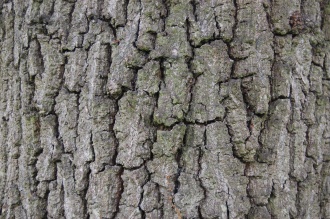Position: Full sun to partial shade
Flowering period: Mid spring
Soil: Moist, well drained
Eventual Height: 35m
Eventual Spread: 30m
Hardiness: 4a, 4b, 5a, 5b, 6a, 6b, 7a, 7b, 8a, 8b, 9a, 9b, 10a
Family: Fagaceae
Quercus robur is a large,long lived, native, spreading, deciduous tree. Its mid green leaves are alternate, simple, lobed and up to 14cm long, with very short leaf stalks, these turn brown/ red in autumn. The main branches usually develop low on the trunk and become gnarled and twisted with age. Its trunk may achieve a diameter of 4m in mature specimens. The bark is grey/ brown and fissured, becoming deeply fissured with age. The tree is monoecious, its flowers appear in the form of bright green male catkins and red/ brown female flowers on the end of long stalks. Its fruit is an acorn which is up to 2.5cm long and appear in groups of one to four on long peduncles (stalks) and appear in late summer.
Quercus robur, commonly known as English Oak, Pedunculate Oak or French Oak , is native to most of Europe (including the UK), parts of Turkey and north Africa. In its native habitat it usually grows as part of a mixed Oak woodland where it is the dominant species. Quercus robur is synonymous with Quercus pedunculata. The two oldest Quercus robur trees in Europe are the Stelmuze Oak in Lithuania and Granit Oak in Bulgaria which are believed to be 1,500 years old.
The etymological root of the binomial name Quercus is derived from the Latin name for an Oak tree, but some authorities believe it to be derived from the Celtic quer meaning ‘fine’ and cuez meaning ‘a tree’. Robur is from the Latin meaning ‘might’ or ‘strength’.
The landscape architect may find Quercus robur useful as a native specimen tree, where space permits. It may also be specified as part of a native woodland planting scheme. Once established this tree is drought tolerant.
Ecologically, Quercus robur supports the highest biodiversity of insect herbivores of any British plant, and is therefore very beneficial. The acorns are also a valuable source of food for many mammals and some birds. Quercus robur is a good tree for establishing a truffle orchard as the truffles grow in an ectomycorrhizal association with the tree’s roots.
The Royal Horticultural Society has given Quercus robur their prestigious Award of Garden Merit in 1993.
Quercus robur prefers moist, fertile, deep, well-drained soils. It tolerates most pH of soil and is lime tolerant.
Quercus robur requires little maintenance. Pruning of this tree should be carried out during winter to early spring, while this tree is dormant.
![]()
Landscape Architecture








Leave a comment